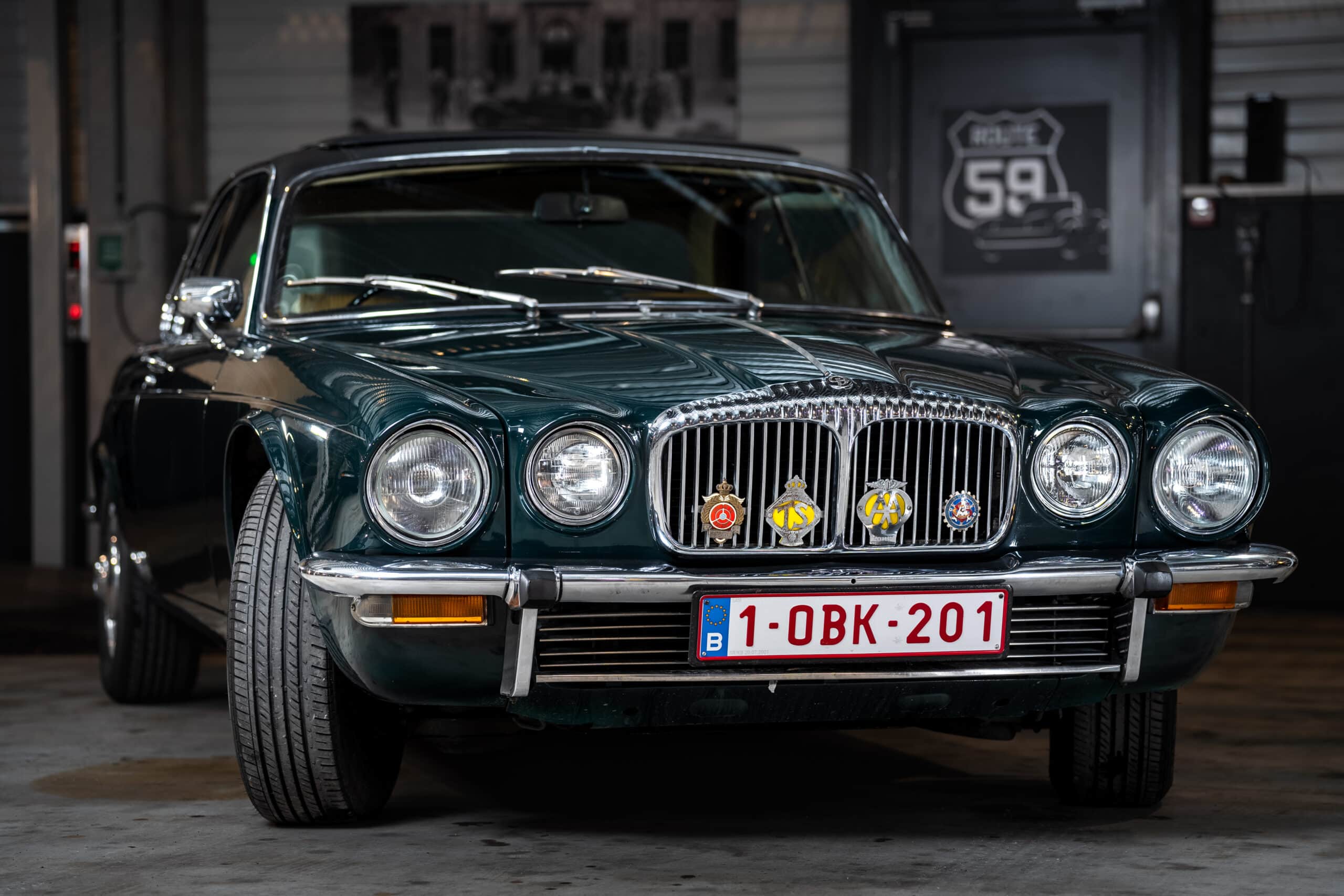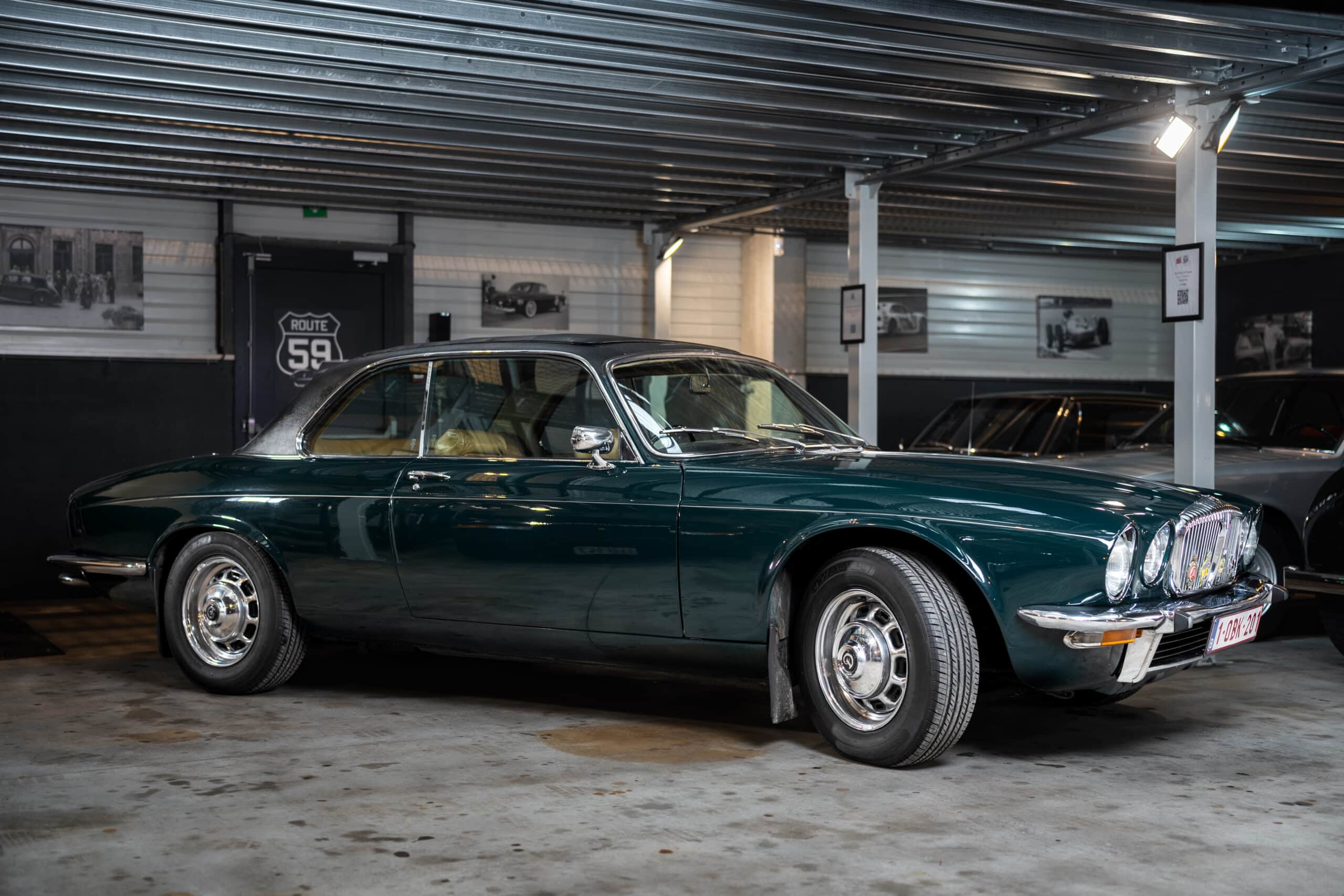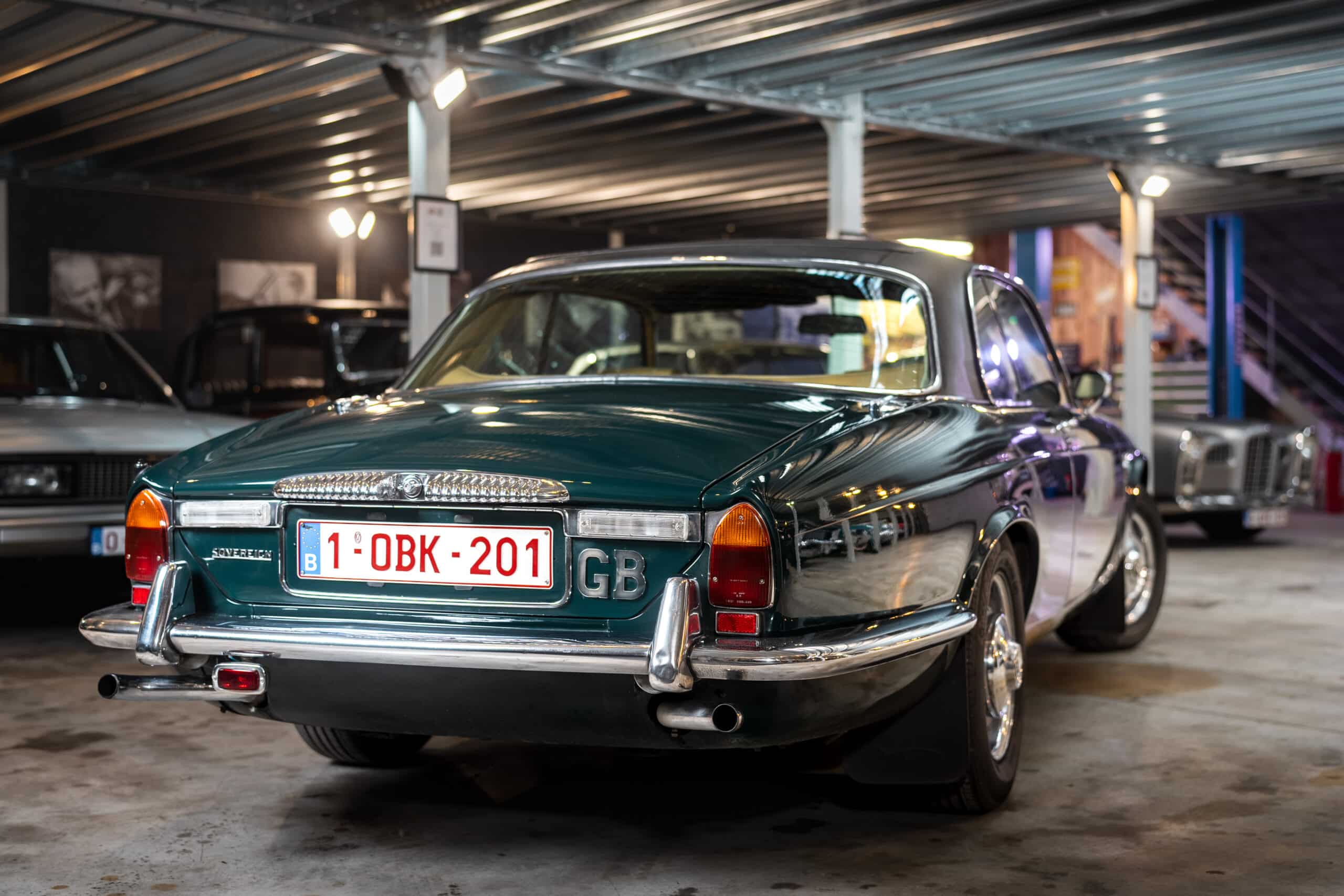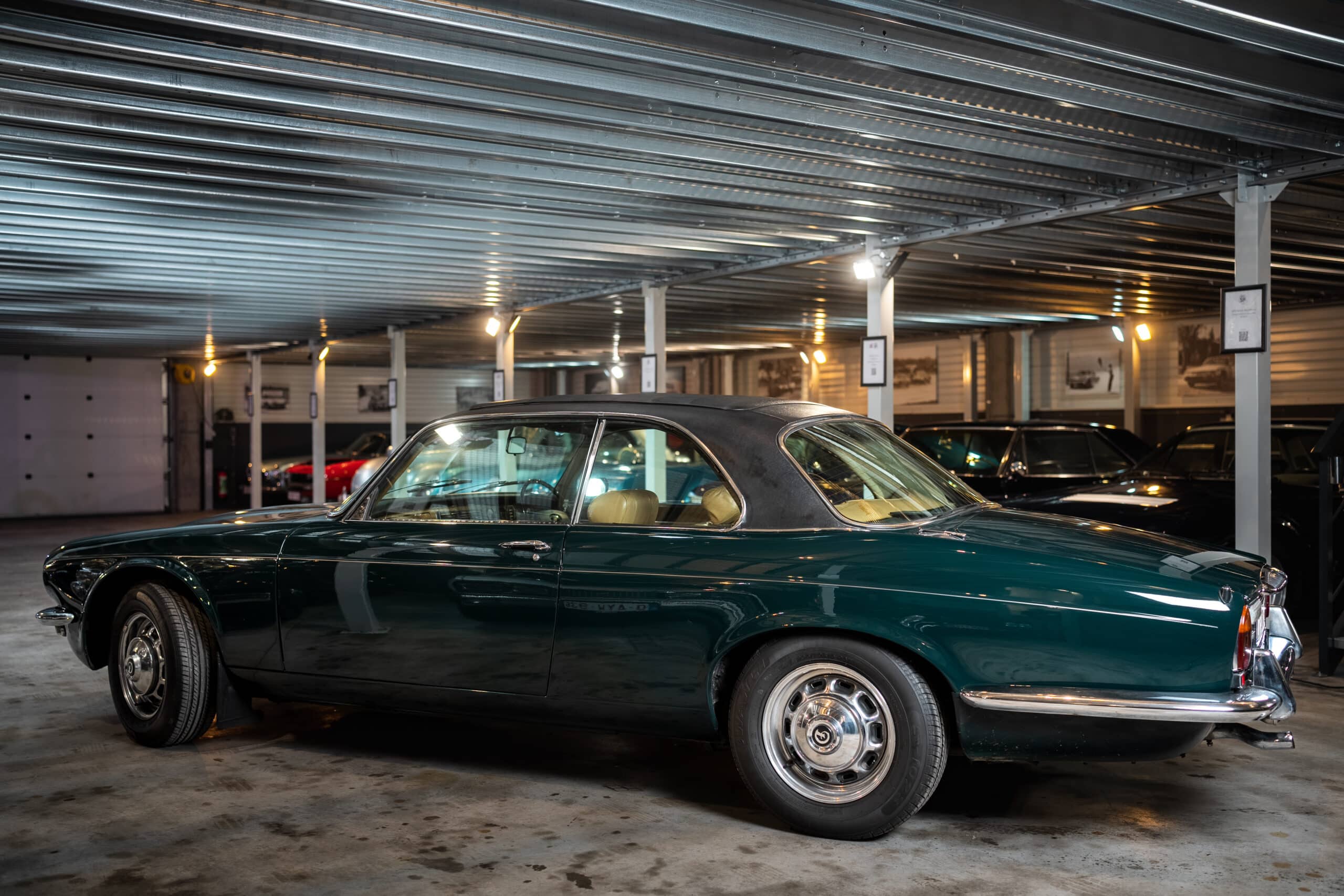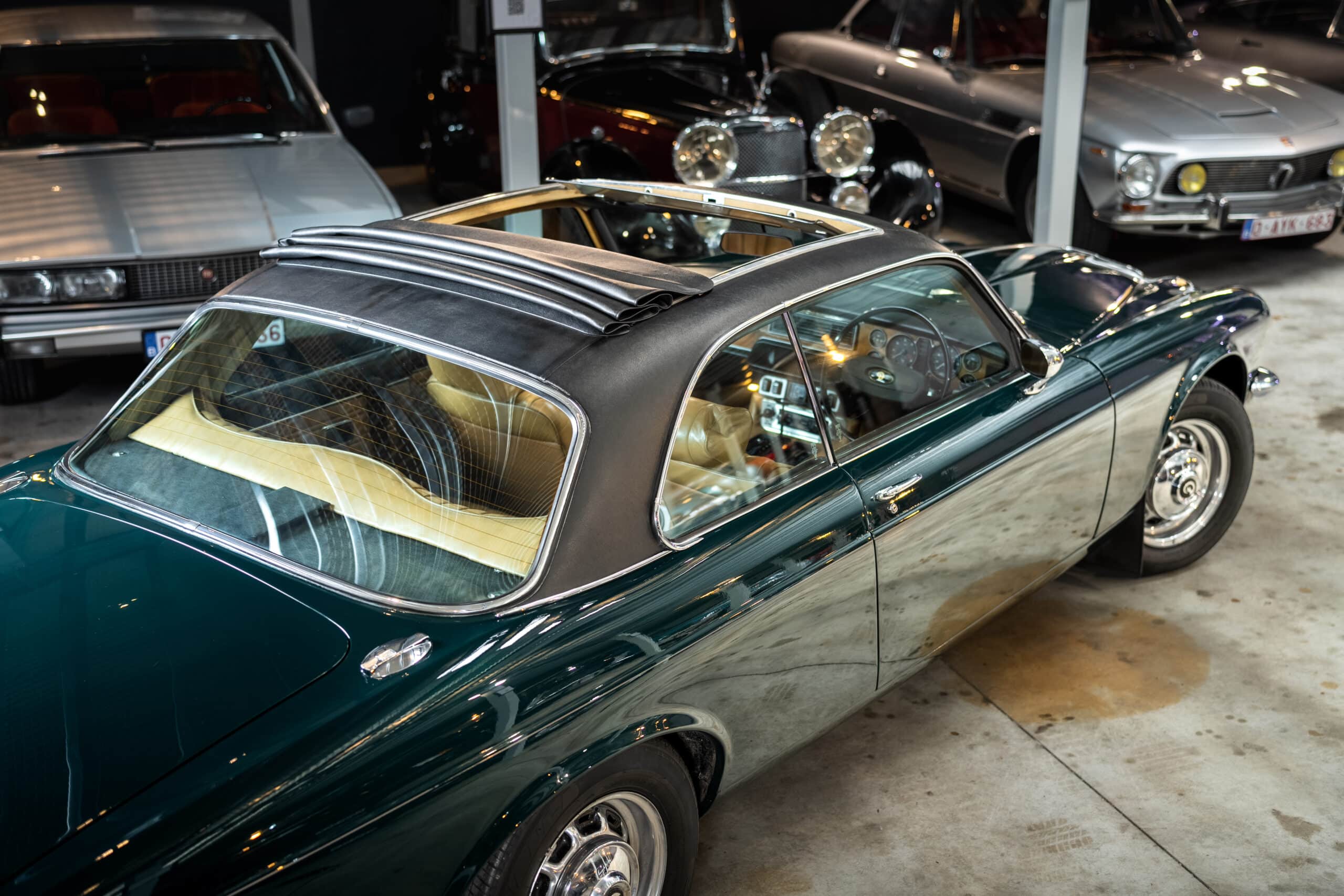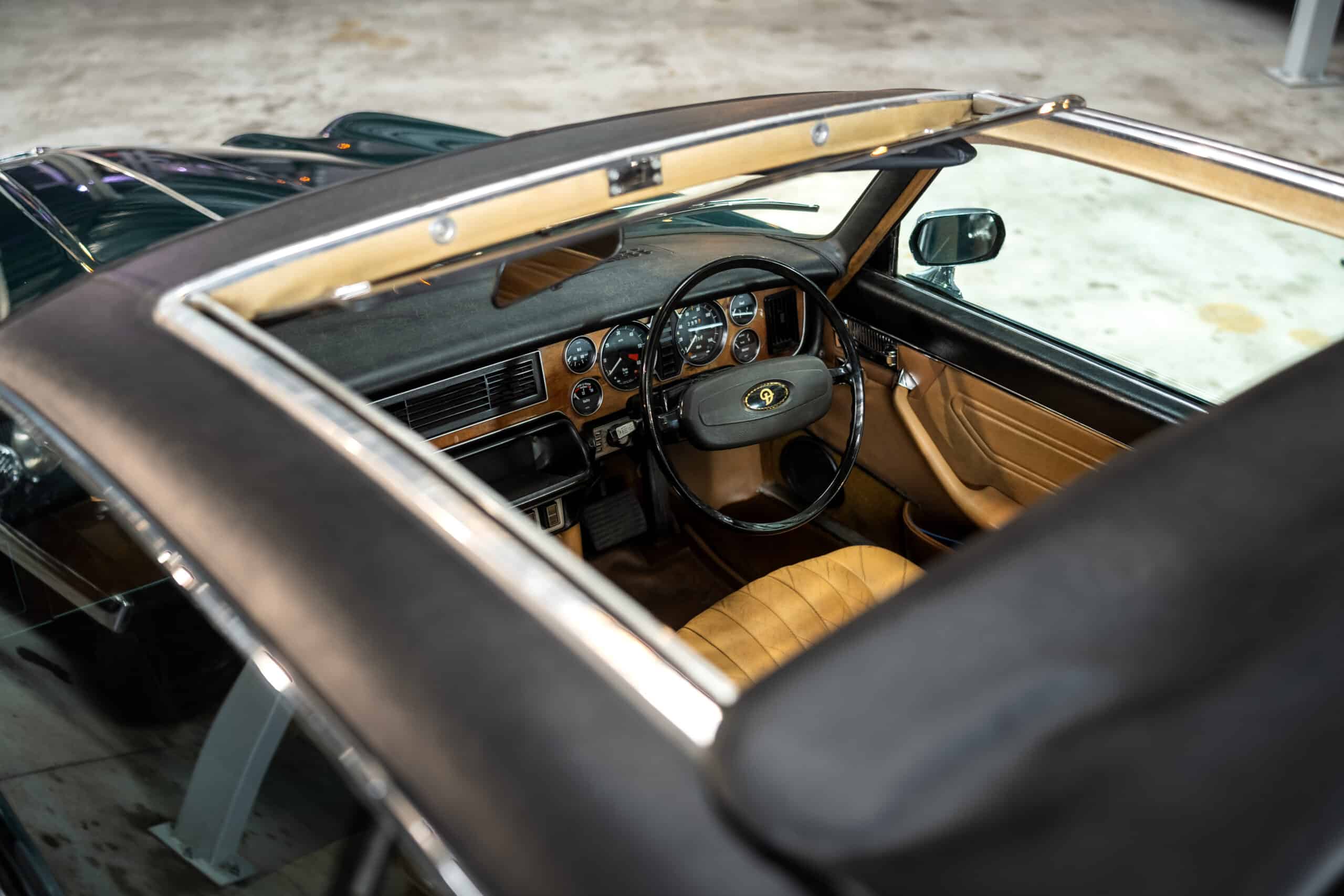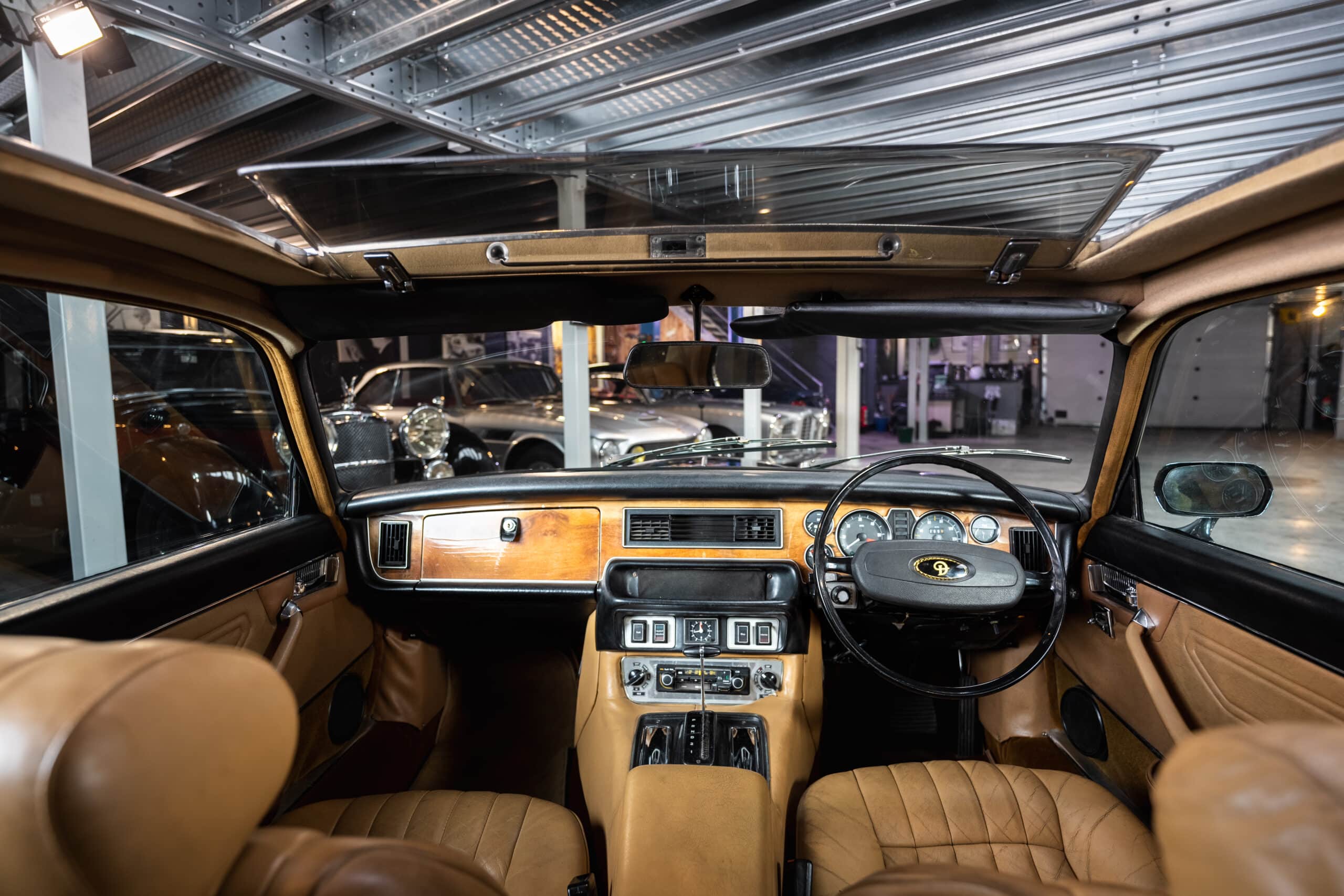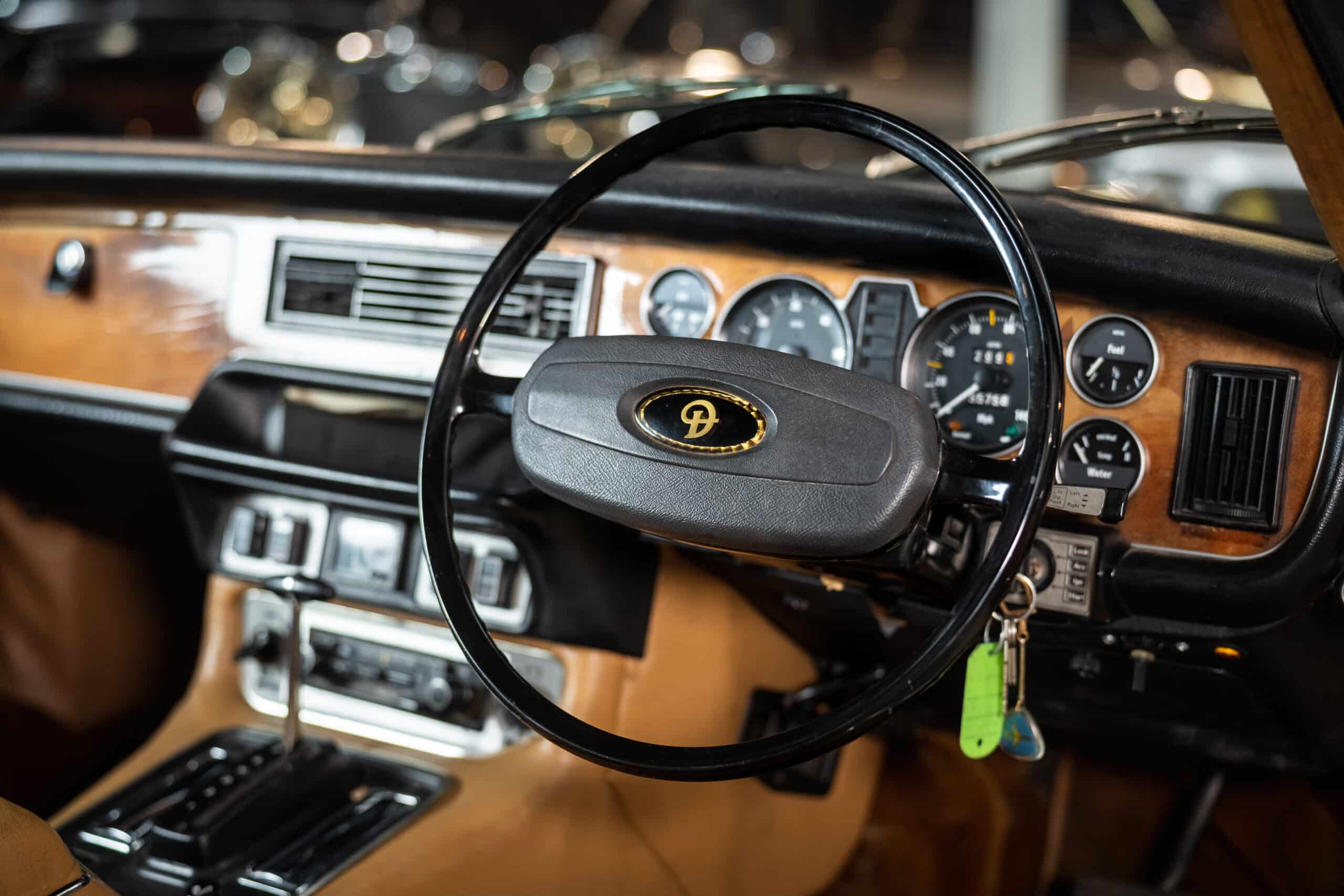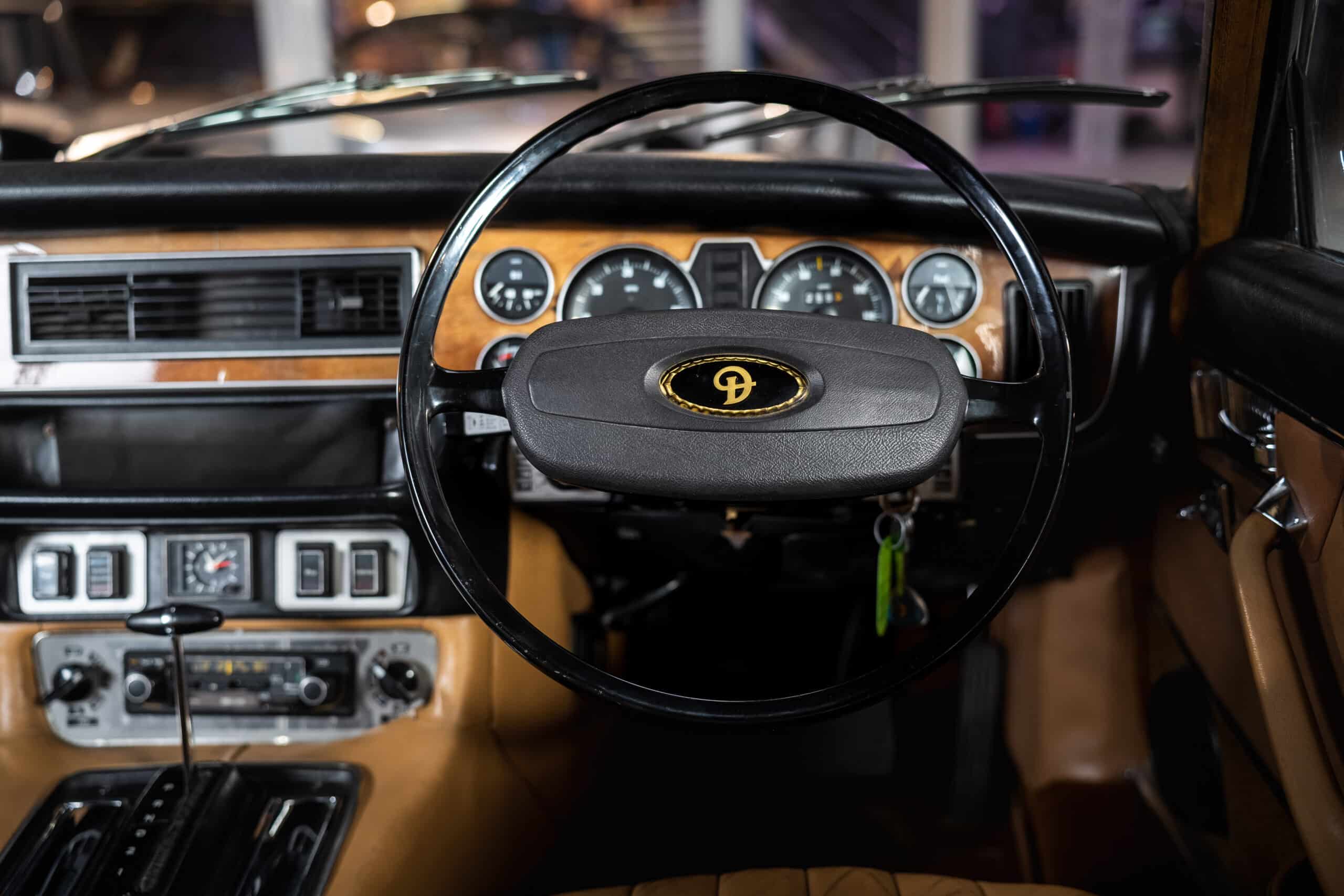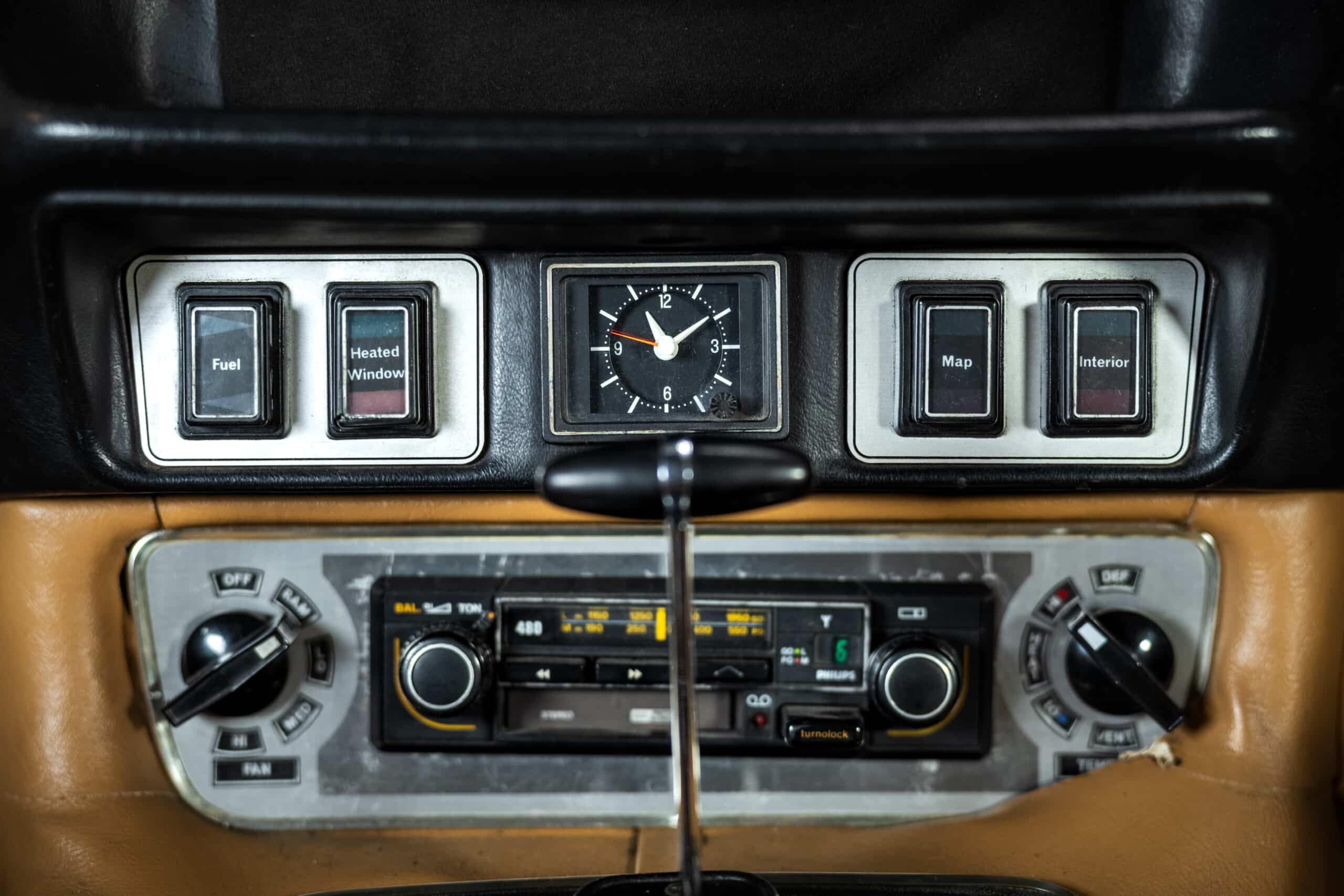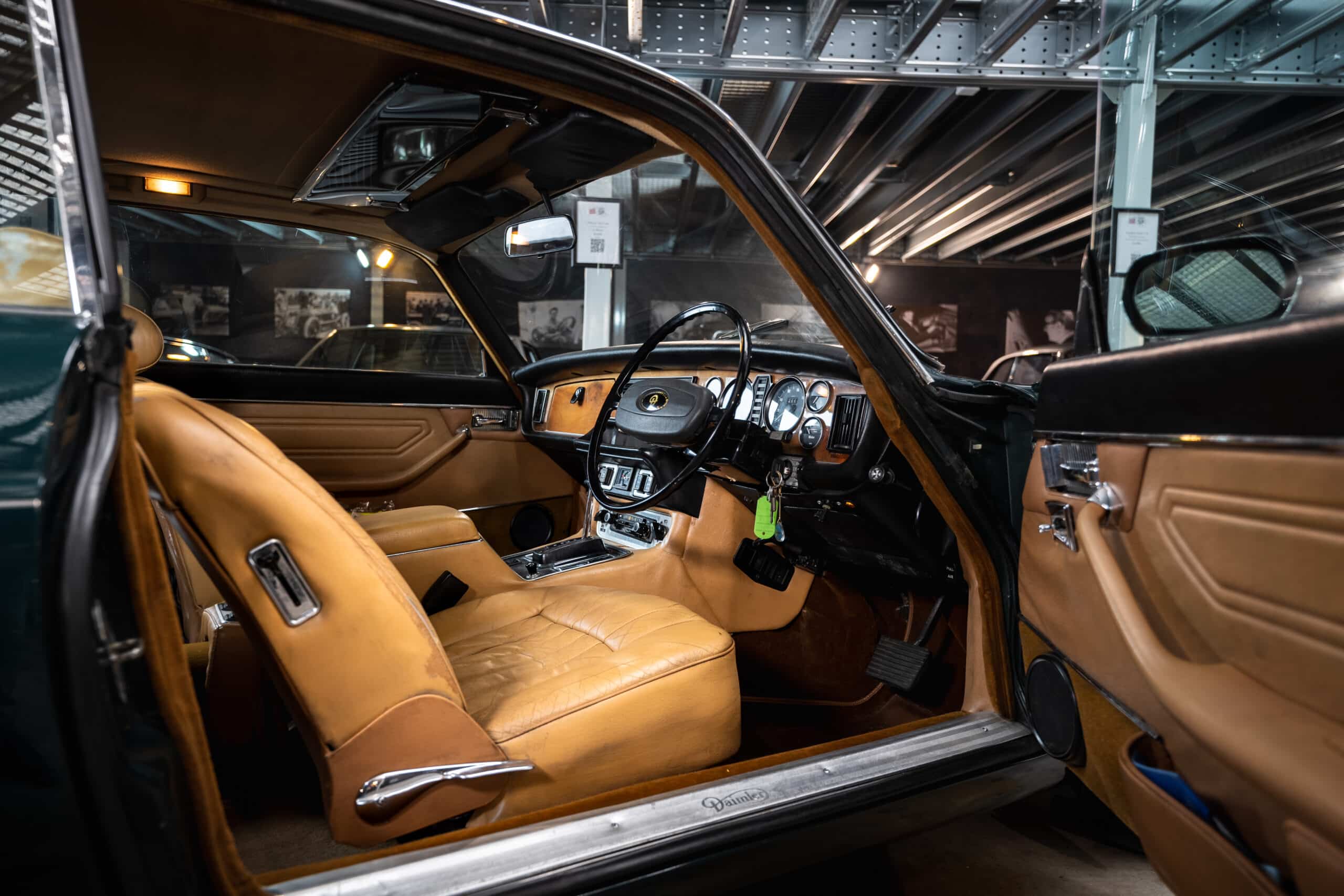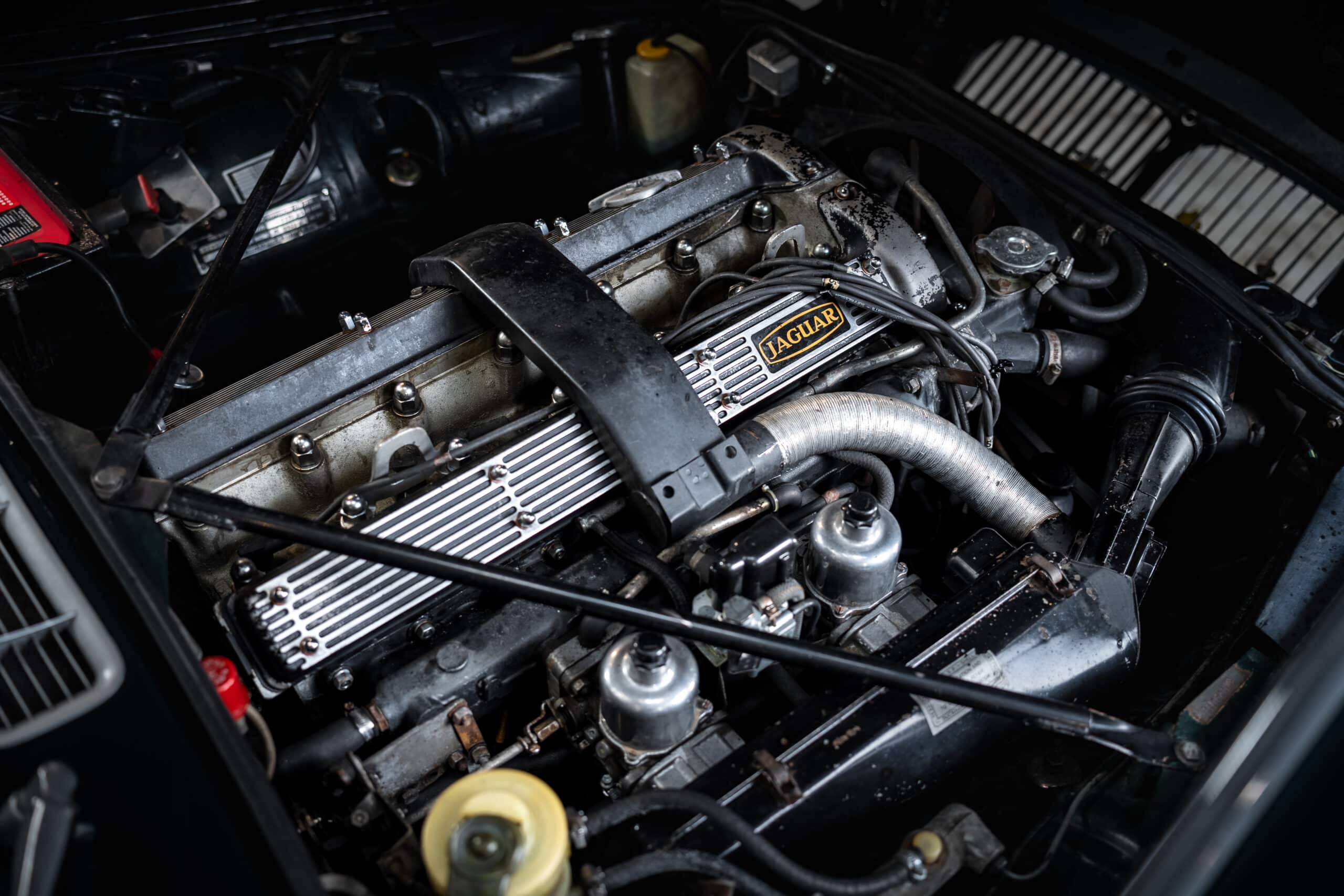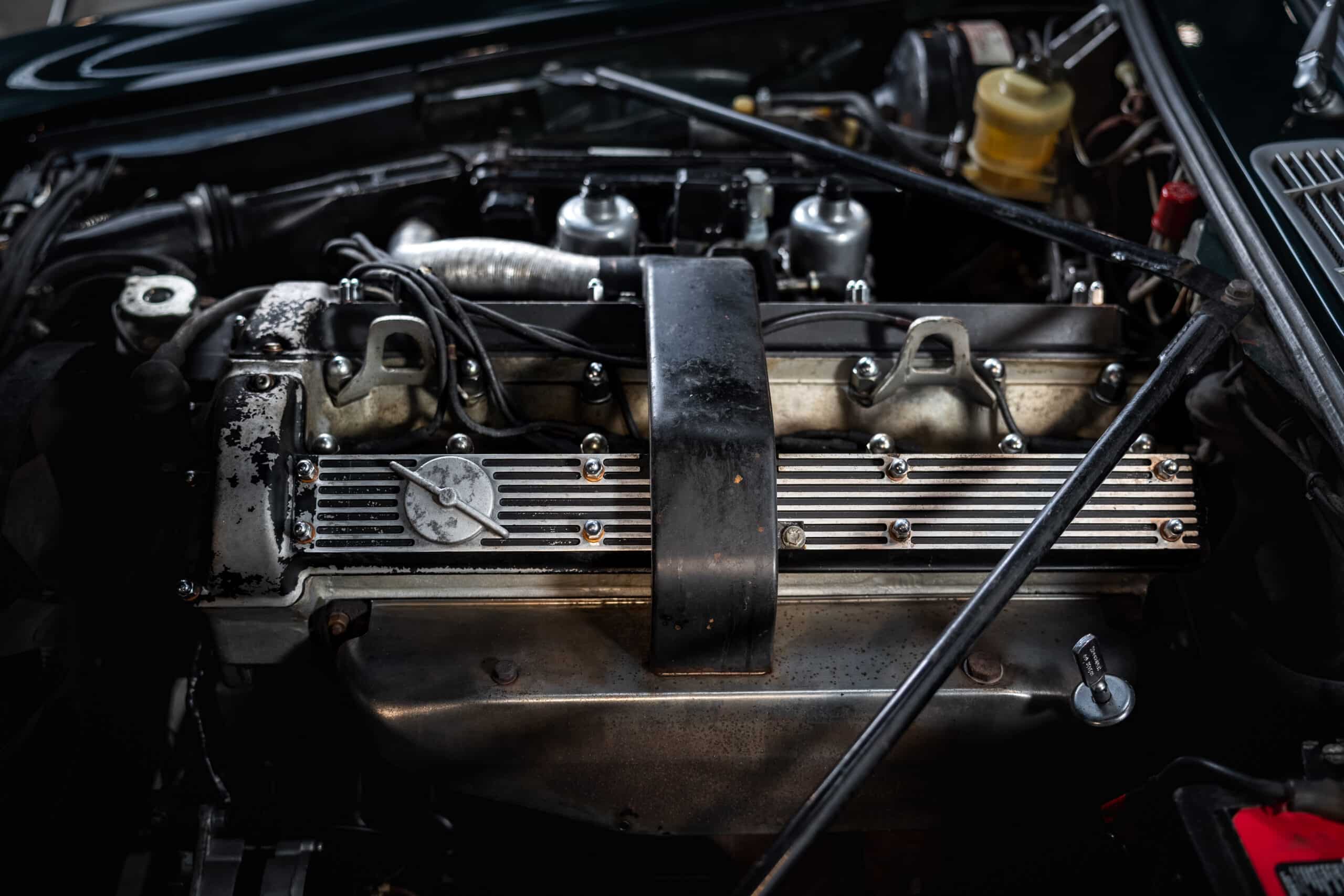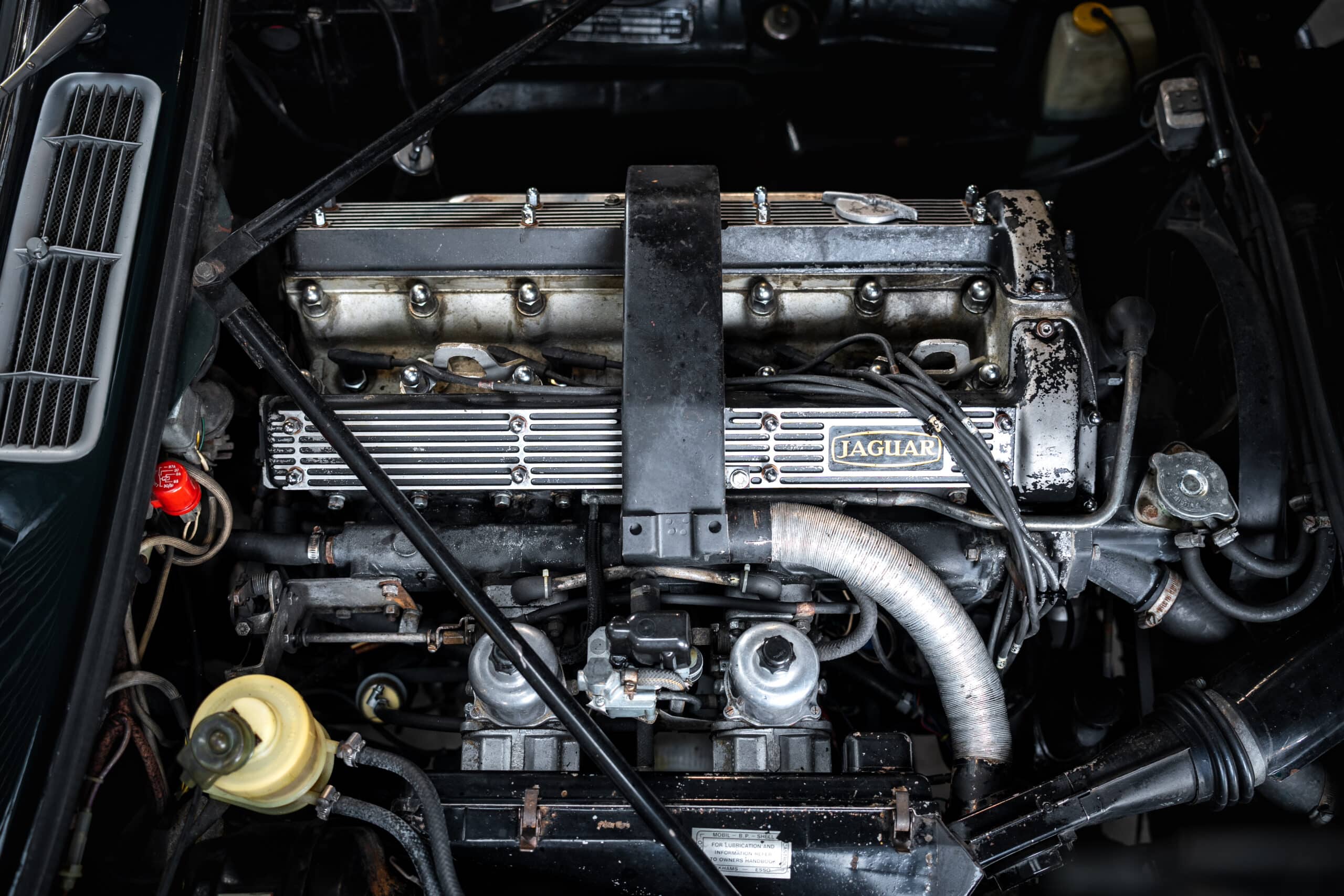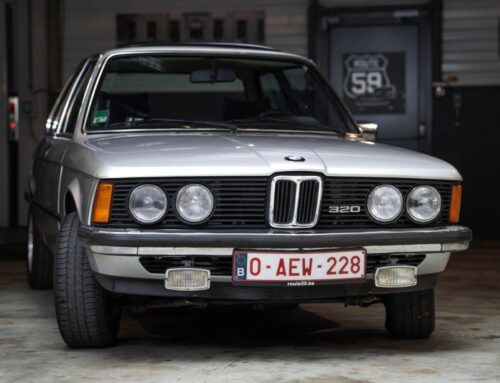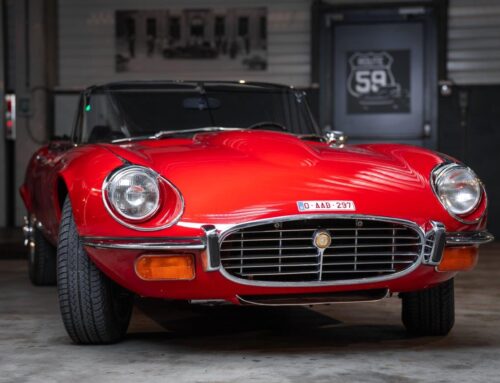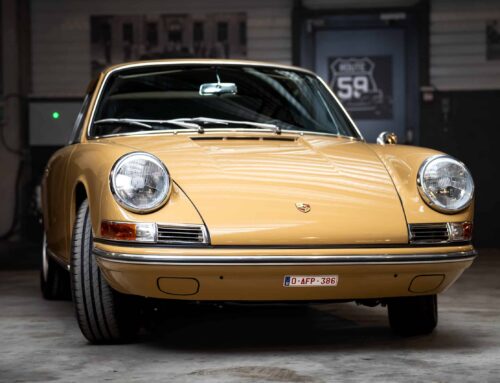Daimler XJC 4.2
| Brand | Daimler |
| Model | XJC |
| Color | Green |
| Transmission | 3-speed automatic |
| Pk | 180 ch |
| Year | 1976 |
| Price | Not for sale |
The XJC is a two-door version of the four-door XJ6 sedan. When Sir William Lyons began styling exercises for the new XJ models in the mid-1960s, it was clear that he had the idea of a two-door coupe in mind for eventual production. The XJC was the last Jaguar to be designed and built by Sir William Lyons.
The two-door coupe is based on the platform of the shorter-wheelbase XJ Series 1 and was clearly intended to be the sporty version of the XJ models. In the UK, Europe, South Africa, New Zealand and Australia, it was offered in four versions: Jaguar 4.2C; Jaguar 5.3C; Daimler Sovereign and Daimler Double Six.
All coupés came with a black vinyl roof as standard. It’s highly likely that the marketing people insisted on this, as vinyl roofs were all the rage in the car industry at the time. In any case, many current owners have chosen to do away with this feature. XJCs are extremely well-proportioned, and the pillarless coupe styling gives an impression of openness that is often associated with a convertible.
Production of the XJC was very short. After debuting in 1975, the last of these large vehicles rolled off the production line in November 1977. Paradoxically, this has enabled the XJC to become the rare classic collection it is today, although prices have yet to reach the dizzying heights reached by the E-Type. The XJC remains one of the most beautiful cars in the world! What’s more, it offers excellent value for money. To date, the XJC is Jaguar’s only fixed-roof two-door coupé sedan.
This example is an even rarer Daimler version from 1976: with Daimler Sovereign finish and 6-cylinder 4.2 engine, only 1,677 units were produced. Of English origin, it’s a right-hand drive (RHD) and a very important feature, it has a very large sunroof which, once the 4 windows are down, brings it very close to a cabriolet!
The car has been very well maintained and has a comprehensive follow-up file. Recent work has included rebuilding the braking system and carburetors.


